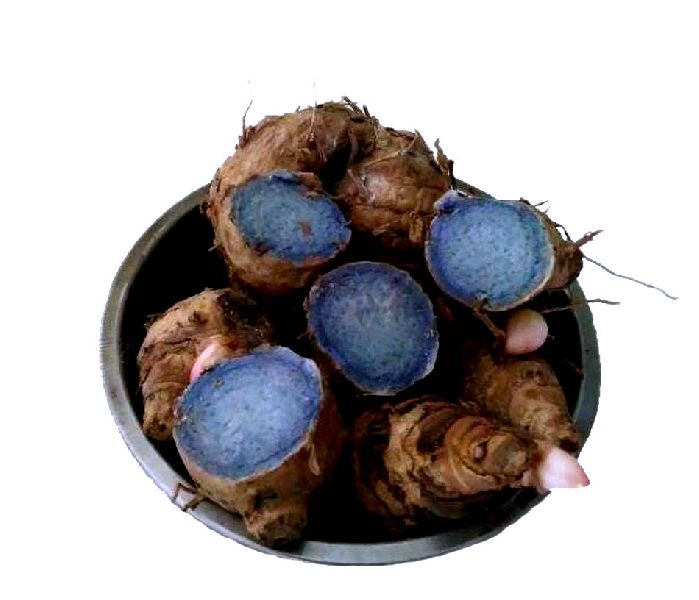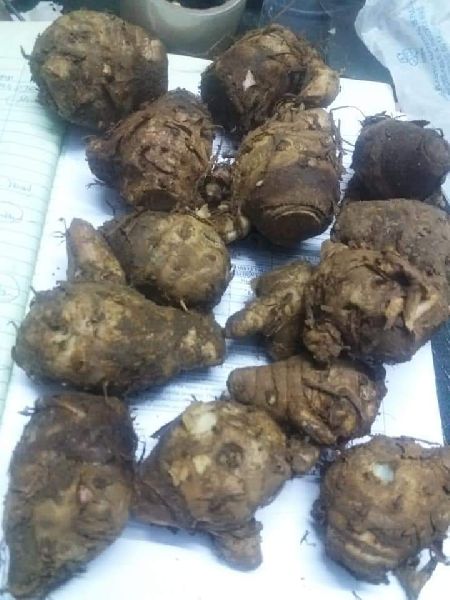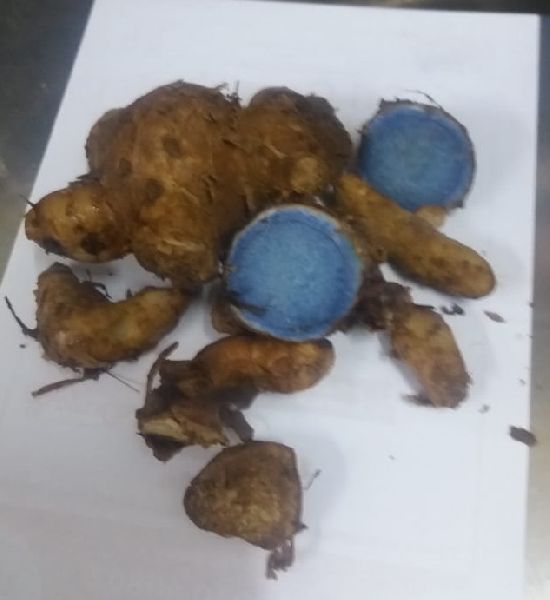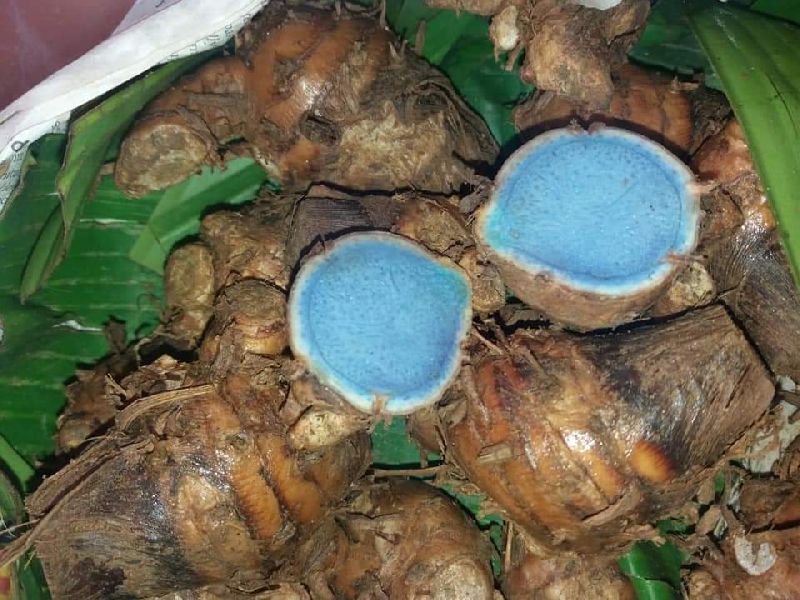Company Information
Ask for more detail from the seller
Contact SupplierBlack turmeric looks quite different than the more common orange turmeric. Black turmeric has an appearance that more closely resembles its cousin, the knobby ginger. The main stem, or rhizome, may have smaller rhizomes branching out, reaching from one to two inches in length. The outer part of the rhizome is a light brown, with rough areas. The flesh is a bluish-purple color that can appear entirely blue or in light and dark concentric circles, sometimes lighter in the center or just near the skin. Black turmeric has a pungent, camphor-like smell. It is somewhat bitter, with an earthy, hot taste.
Facts
Black turmeric is a rare herb. It is the underground portion of the stem, or rhizome, of the Cucurma caesia plant. The plant itself is sometimes grown as an ornamental, but the root has been used for centuries for medicinal and religious purposes. Black turmeric offers benefits similar to the orange variety, but the darker cultivar contains higher concentrations of curcumin than any other Curcuma species. In Hindi, the herb is called Kali Haldi. It is used widely in India for health and religious purposes.
Black turmeric contains the highest concentrations of curcumin of any plant species. It is a powerful antioxidant and anti-inflammatory. The root has been used medicinally for centuries to treat arthritis, asthma, and epilepsy. Black turmeric root is crushed and can be applied to bruises and sprains to ease discomfort or applied to the forehead to help relieve symptoms of migraines.
uses:
Black turmeric has been used by tribes in northeastern India to ward off evil spirits; pieces of the root were kept in a pocket or medicine bag.
Black turmeric is native to northeastern and central India where it has been part of cultural ceremonies and medicinal remedies. Black turmeric is used by many tribal communities in the state of Madhya Pradesh, on the central eastern coast, along the Bay of Bengal.





